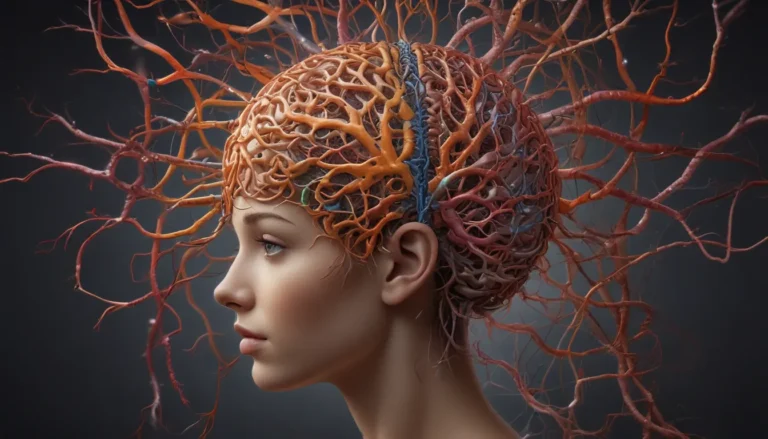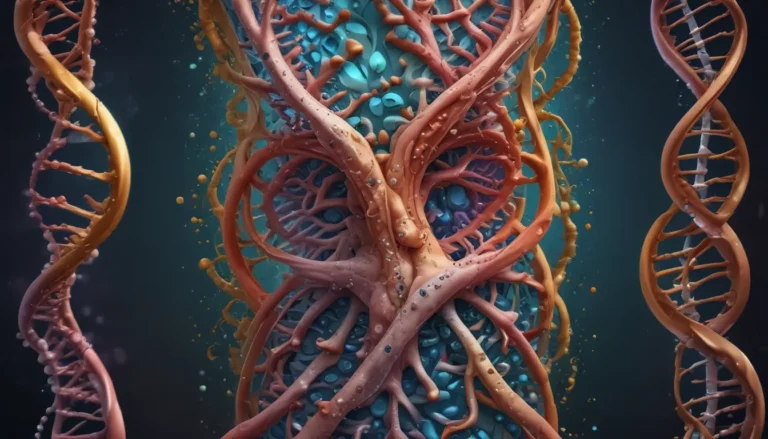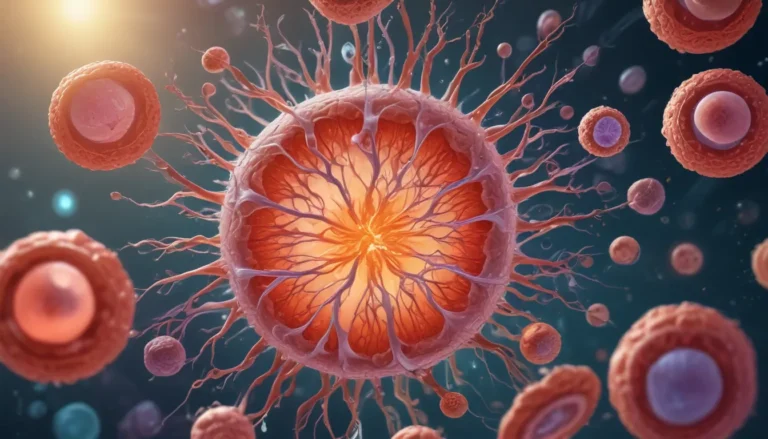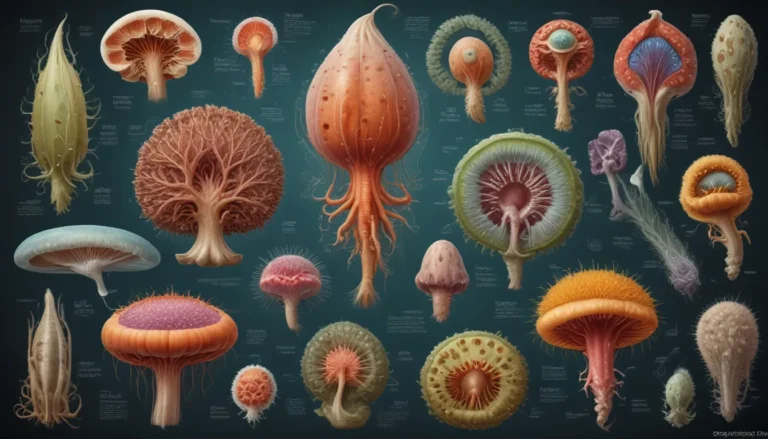A Note About Images: The images used in our articles are for illustration purposes only and may not exactly match the content. They are meant to engage readers, but the text should be relied upon for accurate information.
Welcome to the realm of stop codons, the extraordinary nucleotide sequences that govern the termination of protein synthesis. In the intricate dance of genetic expression, stop codons play a vital role in ensuring the accurate production of proteins, regulating genetic processes, and preventing diseases. Join us on a captivating exploration of 19 remarkable facts about these fundamental components of molecular biology.
The Essential Role of Stop Codons in Protein Synthesis
At the heart of protein synthesis lies the critical function of stop codons. Also known as termination codons, these sequences serve as signals for ribosomes to halt the addition of amino acids to the growing polypeptide chain. By marking the end of translation in messenger RNA (mRNA) molecules, stop codons play a pivotal role in completing the protein-encoding message.
The Trio of Termination: Three Stop Codons
In the intricate genetic code, there exist three specific sequences that act as stop codons: UAA, UAG, and UGA. Unlike other codons that code for amino acids, these termination signals instruct ribosomes to cease protein synthesis, ensuring the accuracy and integrity of the final protein product.
The Guardians of Termination: Release Factors
Release factors, specialized proteins, are the sentinels that recognize and bind to stop codons. Once these factors engage with the termination signals, they trigger the release of the synthesized protein from the ribosome and facilitate the disassembly of the ribosomal complex, marking the completion of translation.
Quality Control Mechanisms and Stop Codons
Stop codons also serve as guardians of quality control in protein synthesis. If a stop codon is missing or mutated, the ribosome may inadvertently continue translating beyond the intended termination point, potentially leading to errors in protein structure and function. This emphasizes the crucial role stop codons play in ensuring the fidelity of genetic expression.
Universality and Rarity: Stop Codons Unveiled
Across all organisms, from bacteria to humans, the three stop codons UAA, UAG, and UGA are universally recognized termination signals. Despite their fundamental significance, stop codons are relatively rare in the genetic code, reflecting the need for efficient and precise termination mechanisms in protein synthesis.
Ambiguity and Evolution: The Complexity of Stop Codons
While the canonical stop codons provide clear termination signals, the genetic code exhibits flexibility and adaptability. In certain cases, alternative codons can also function as stop signals, highlighting the complexity of genetic regulation. The presence of alternative termination signals in various organisms suggests an evolutionary adaptation to optimize protein synthesis and adapt to changing environmental conditions.
The Enigmatic Suppression of Stop Codons
In rare instances, stop codons can be suppressed, allowing ribosomes to read through these signals and incorporate additional amino acids into the protein. This phenomenon, known as stop codon suppression or read-through, may result from specific genetic mutations or the presence of suppressor tRNAs, unveiling the intricate mechanisms of genetic regulation.
Beyond Termination: Programmed Ribosomal Frameshifting
While stop codons traditionally mark the end of protein synthesis, programmed ribosomal frameshifting introduces a fascinating twist. In certain circumstances, stop codons can be followed by codons that continue translation, leading to the synthesis of alternative protein isoforms with modified functions. This dynamic process underscores the versatility of genetic expression.
Unraveling the Discovery and Significance of Stop Codons
The identification and understanding of stop codons stand as pivotal milestones in deciphering the genetic code. Through groundbreaking research and experimentation, scientists have uncovered the intricate role of stop codons in protein synthesis, shedding light on the mechanisms that govern genetic expression and highlighting their critical importance in molecular biology.
Exploring Regulatory Functions and Genetic Diseases
Aside from their role in terminating protein synthesis, stop codons may harbor regulatory functions in gene expression. Emerging evidence suggests that alternative mechanisms involving stop codons can influence the translation and stability of specific mRNA sequences. Furthermore, mutations affecting stop codons can lead to genetic diseases by disrupting protein synthesis and yielding abnormal or non-functional proteins.
Evolutionary Origins and Adaptive Functions
The evolutionary origins of stop codons remain a subject of scientific inquiry. Various theories propose that these termination signals have emerged from pre-existing codons or evolved from ancestral sequences to ensure precise protein synthesis. This evolutionary adaptation underscores the dynamic nature of genetic regulation and the intricate mechanisms that drive molecular evolution.
Ribosome Recycling and mRNA Decay: Interplay with Stop Codons
In the intricate choreography of protein synthesis, stop codons also play a vital role in ribosome recycling and mRNA decay. After termination, release factors and additional proteins facilitate the dissociation of ribosomes from mRNA, enabling them to engage in subsequent rounds of translation. Additionally, stop codons are involved in marking mRNA transcripts for rapid decay, controlling gene expression and maintaining cellular homeostasis.
Evolutionary Pressure and Viral Hijacking: Challenges and Adaptations
Stop codons are subjected to evolutionary pressure to uphold their efficiency and accuracy in termination mechanisms. Mutations that alter the recognition or functioning of these termination signals can have profound effects on protein synthesis, influencing the survival and adaptation of organisms. Moreover, viruses have evolved strategies to manipulate stop codons for their benefit, exploiting alternative mechanisms or encoding their own release factors to ensure efficient synthesis of viral proteins.
Unlocking the Potential of Stop Codons: A Path to Discovery
In conclusion, the realm of stop codons unveils a fascinating journey into the intricate world of gene expression and protein synthesis. These remarkable nucleotide sequences not only contribute to the termination of translation but also hold key insights into genetic regulation, disease mechanisms, and evolutionary adaptations. As we unravel the mysteries of stop codons, we uncover new possibilities for therapeutic interventions, genetic engineering, and advancements in biotechnology and medicine. Embark on this captivating exploration to expand your understanding of life’s fundamental building blocks and pave the way for innovative discoveries in molecular biology.
FAQs for a Deeper Understanding
- What is a stop codon?
-
A stop codon is a specific sequence of three nucleotides in mRNA that signals the termination of protein synthesis during translation.
-
How many types of stop codons are there?
-
There are three types of stop codons: UAA, UAG, and UGA.
-
Are stop codons universal?
-
Yes, stop codons are universal, maintaining the same genetic code across all organisms.
-
Can stop codons be mutated?
-
Yes, stop codons can be mutated, leading to read-through events where protein synthesis continues past the normal termination point.
-
How are stop codons related to diseases?
-
Mutations disrupting or altering stop codons can cause genetic diseases by producing abnormal proteins or inhibiting the production of essential proteins.
-
Can stop codons be used in genetic engineering?
- Yes, stop codons can be modified or engineered to introduce specific changes in protein sequences, enabling innovative applications in biotechnology.
Join us on this transformative journey as we delve into the wonders of stop codons, unravel the intricacies of genetic regulation, and embrace the boundless potential of molecular biology. Let your curiosity guide you as we explore the extraordinary realm of stop codons and unlock the secrets of genetic expression.






